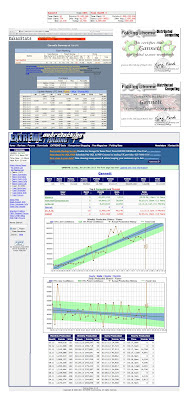
I have a Blackberry Torch 9800 supplied by work and its kind of OK. I don't love it but I do use it a lot. It hooks into the Email Exchange server at work so I can access email and calendar entries. Working on a global project, I have to sync up early in the morning with the Aussies and work with West Coasters in the late afternoon. Having the Blackberry means that I can checkin in seconds and see if any active email threads need attention. Loosing it did not give me heart pain but for sure losing that device would gives me head pain and promises a bureaucratic nightmare.
The main non-work Killer app for me is
Runtastic for GPS tracking my progress against my
fitness challenge for the the year. To make this easier I recently bought a handlebar and bracket to put the BB in plain sight as the miles pass. I guess I was not looking at the BB often enough cause after 4 miles or so I looked down and it was gone. You are allowed to swear when that happens :-) Later examination revealed that I had put the bracket upside down so the phone holder case must have just worked loose and popped off. Doh!
So what will maximise the chances of recovery ? The first thing was to backtrack to the house scanning for the phone. Previously, I had set a welcome message on the phone that says "Name and call +44nnnnnnnn to return phone." That's my office phone number with voice mail. So the next action was change the voice mail to mention lost phone and ask person to call house number. Geek moment here, knowing how to remotely access office voicemail and update the greeting message *81 Login, Password, 8 2 3 for temp greeting 5 is record, # and Kerpow! Done. The Blackberry was all pin coded and passworded so would have been of limited use in hostile hands.

Backtracking again from house into town following the same route, scanning the edges failed to locate the lost device. Just as I approached the local police station to report loss a call from her in doors said that phone had been handed in to police. Whoop ! some good luck there. Police station was active but had no public counter on the weekend. Anyway after calling phone on borrowed mobile bobbies head popped out of second floor window. "Are you here to collect phone ? Will be out in a minute." A second later another head emerges with a cheeky "Heres the phone, catch ..... Larf Larf." After a couple of "What can you tell me about this phone ?" checks the phone was returned. Yeah!! Also got the phone number of person who handed in the phone.
Back to the house with big sigh of relief. All the while Runtastic was tracking the phone location so a sneaky look shows the phone GPS track wander from the drop site, round and round the shops then off to the police station where it bounces round a lot before collection.
Final wrap is call to finder with big thanks and Amazon voucher heading to the most kind and done the right thing Mr Brian Hockin from North Devon. Thanks mate, you and the Bideford Constabulary, saved me a heap of pain.











